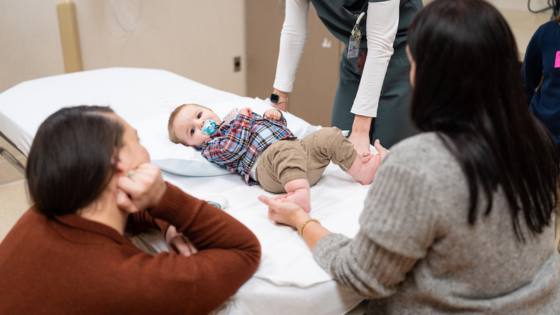
Wyatt Krentz’s path to a diagnosis of clubfoot began early—in fact, the process started before he was even born. “We had an ultrasound in October of 2022, at 20 weeks [of pregnancy], where my doctor said that there was a strong possibility that Wyatt would be born with clubfoot,” shares Wyatt’s mom, Katie. “It was confirmed at a [second] ultrasound in December.”
What is clubfoot?
Clubfoot—also known as talipes equinovarus—is a condition that affects infants at birth. Some children have one affected foot, while others experience the condition in both feet. In mild cases, the foot might be quite flexible. In more severe situations, the foot is more rigid. If left untreated, clubfoot can cause difficulties with walking. The condition affects about one out of every 1,000 children, and ultrasound technology can sometimes detect clubfoot before birth. While the exact cause of clubfoot is not yet known, it is a highly treatable condition.
Any diagnosis can sound scary when there’s a child involved. Katie says, “At first, it was just heartbreaking. Hearing about the diagnosis, I was scared at first … I just wasn’t sure I could handle something like clubfoot.” Wyatt was to be the fourth Krentz child to join the family, and Katie was concerned about what caring for a baby with clubfoot might look like.
Fortunately, Gillette Children’s was with Wyatt and his family every step of the way. Thanks to Gillette’s clubfoot clinic—conducted by our internationally recognized pediatric orthopedic experts—as well as an in-house casting team, Wyatt was able to go through the entire clubfoot treatment process on site. “All of our clubfoot appointments have been conducted at Gillette. Wyatt began the serial casting process on May 1, 2023. He got new casts every Monday for eight weeks, until his tenotomy procedure on June 26,” Katie offers.
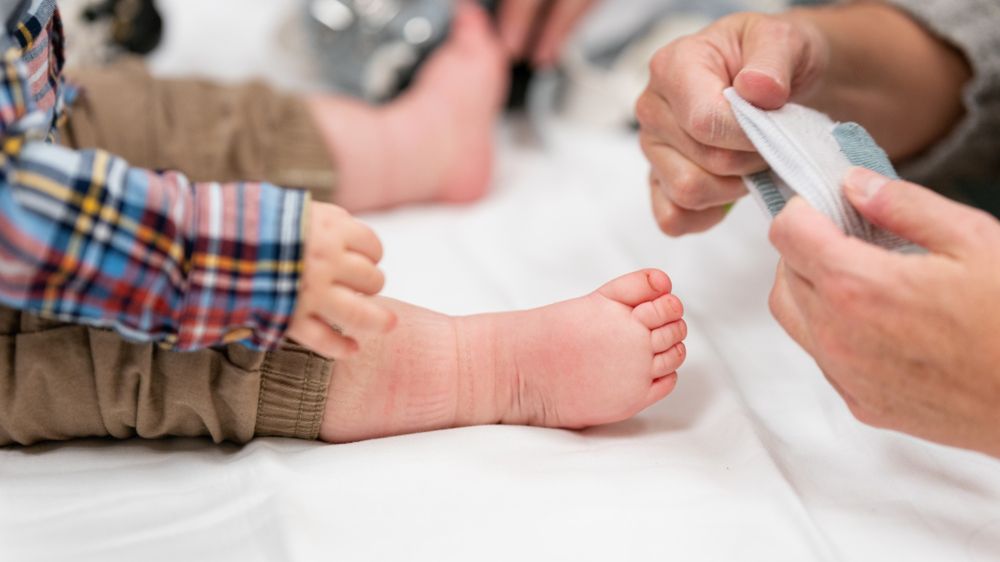
Phase 1: Wyatt Receives Clubfoot Casting at Gillette
From his first Gillette appointment, Wyatt has been seen by board-certified orthopedic surgeons, pediatric orthopedic surgery specialists, and physician assistants who specialize in the treatment and correction of clubfoot in the youngest of patients—Wyatt began the serial casting process for clubfoot at just a month and a half old. “I was scared,” Katie shares, “but he has been a dream. He went through eight weeks of casting, and I believe he slept through at least the first four casting procedures that he had!”
Wyatt’s care team includes Megan Haselbauer, PA-C, and Alison Schiffern, MD. “Usually, babies tolerate the casting part of the treatment quite well,” Dr. Schiffern says. She notes that the weekly casting phase of clubfoot often lasts anywhere from five to eight weeks, “but it can vary between patients. We determine casting needs based on the progress the foot is making each week, and each week make a determination of when the baby is ready for next steps."
Wyatt’s treatment being in such capable hands helped put Katie’s mind at ease. “Our casting nurse, Tianne, was such a welcome presence each week at our casting appointments. Her calming support made me feel like we would get through this process just fine. Dr. Schiffern and Megan Haselbauer have been outstanding. They take their time when meeting with us, and clearly explain what we could expect at each appointment. I appreciate a medical professional who can talk to families and make us feel heard.”
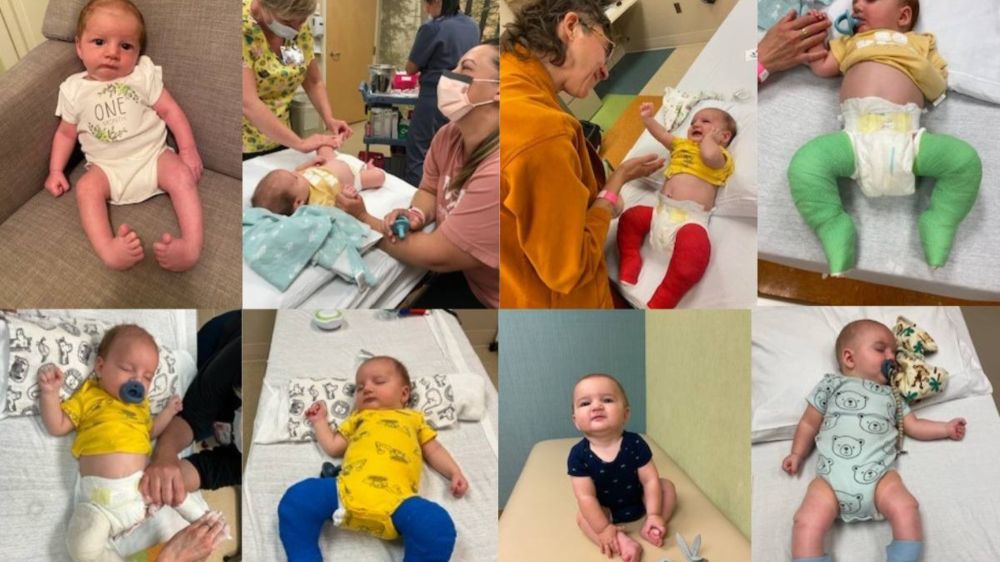
Phase 2: Wyatt Undergoes an Achilles Tenotomy for Clubfoot
Following the casting phase, Wyatt was ready to undergo an Achilles tenotomy. The Achilles is the thick tendon located at the back of the leg, near the ankle. In babies with clubfoot, this tendon (along with the calf muscles) is usually very tight and needs to be lengthened with surgery. A tenotomy lengthens the Achilles tendon and improves flexibility in the ankle.
Due to his age, Wyatt had his tenotomy performed in the clinic with local anesthesia (numbing medicine). Local anesthesia is often an option for babies up to about six months of age. If the child has the tenotomy after the age of six months, they will often be sedated or put under general anesthesia for the procedure.
Phase 3: Wyatt Eases Into the Clubfoot Bracing Process
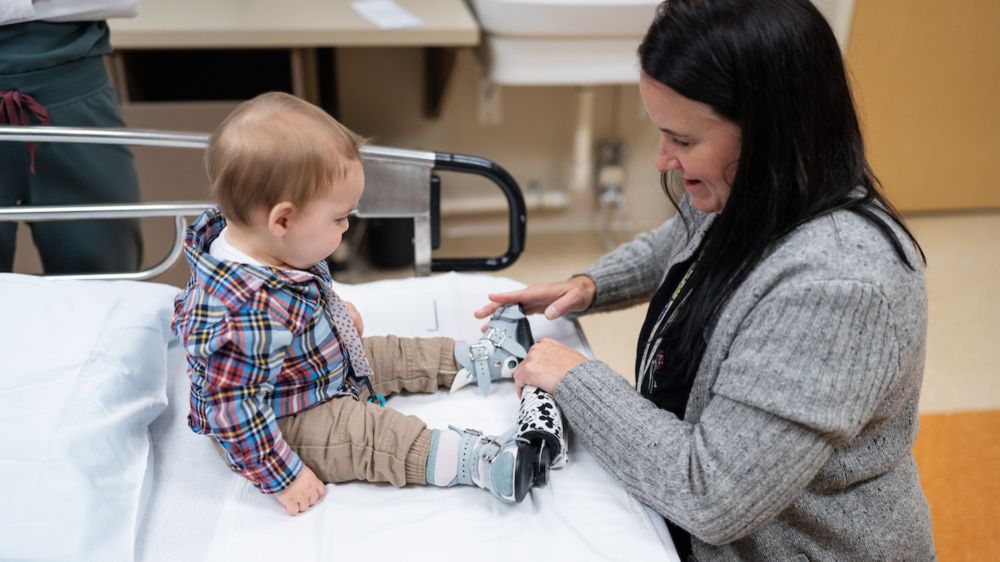
Once Wyatt had recovered from his tenotomy, he began the bracing phase of the treatment process—also known as the “boots and bar” phase.
Dr. Schiffern says, “The transition to bracing—the bar and shoes—is often harder for families and babies to get used to. After the initial adjustment period, bracing is usually well tolerated if families are compliant with doing it every night, so the child gets used to it.”
Katie and the rest of Wyatt’s family were relieved to find that Wyatt tolerates this third phase of clubfoot treatment just as well as the first two. “He hates having things put over his head, which is hard because he’s a baby and we have to change his clothes often,” says Katie. “But he seems to be OK with the boots and bar—he plays with the bar while we put the [boots] on, and then when it’s time for us to put the bar on, that’s when he gets to hold his toothbrush.” Wyatt will wear his boots and bar setup part-time until he is four years old, according to his care team.
For Wyatt’s most recent boots and bar appointment, he was joined by one of his older siblings—sister Harper, age 10, who dotes on him. “He is SO loved by his siblings. Wyatt has always had a special bond with Harper. From early on he has always smiled at her, he looks for her and will crawl after her. We are so lucky to have her help!” Other siblings Amelia, age 7, and Aiden, age 5, love to hold Wyatt and give him kisses whenever he passes by. “We are incredibly blessed having such amazing big siblings for our baby!” Katie gushes.

Katie Shares Her Advice for Parents of Children with Clubfoot
Katie and the rest of Wyatt’s family have learned a lot from Wyatt’s journey through the clubfoot treatment process. “If I could give some advice to families newly diagnosed with clubfoot, I would just say to snuggle your baby. Whenever Wyatt was uncomfortable, or adjusting to a new step in the process, we would snuggle him, and everything seemed to be just fine.”
Katie credits the professionals at Gillette for making a daunting process go smoothly. “Trust yourselves as parents and trust the amazing team at Gillette. Now, on the other side of the most intensive part of this journey, I am breathing a sigh of relief that nothing was as hard as I had imagined it would be. Our love for Wyatt far outweighed any sort of challenge or obstacle that stood in our way.”
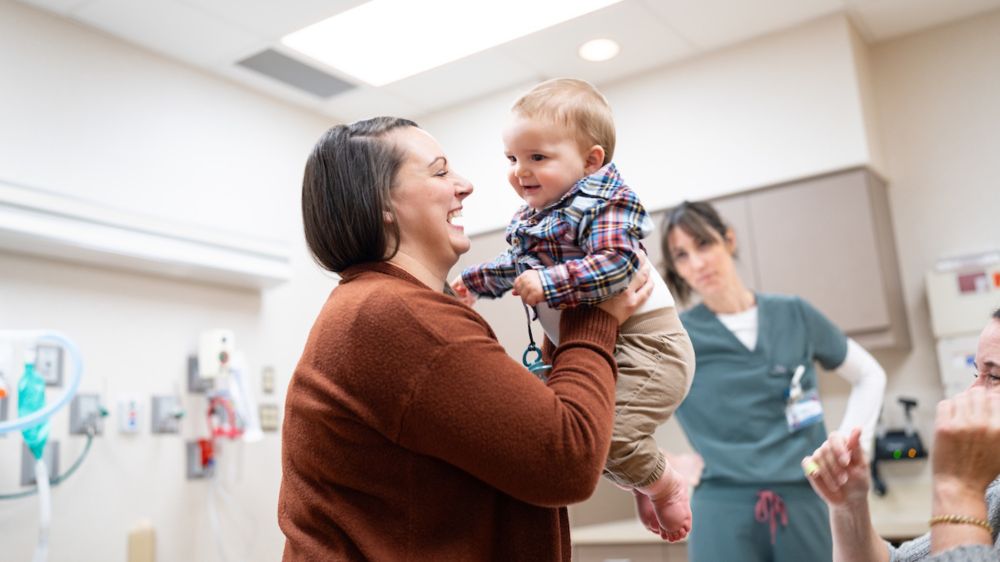
Get Gillette Stories in your inbox!
Stay “in the know” with our Gillette Stories! Receive the latest stories and news from Gillette delivered straight to your inbox..
 Home Page
Home Page
